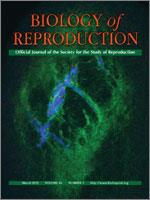In the zebrafish model, the ontogenic expression profiles of all pituitary hormones have been reported except gonadotropins, partly because they are not supposed to be expressed in the embryonic stage. The spatiotemporal expression patterns of gonadotropins, namely follicle-stimulating hormone (Fsh) and luteinizing hormone (Lh), in this species therefore remain largely unknown. As the master hormones controlling reproduction, the information on this issue would be valuable for understanding the roles of gonadotropins in early sexual development. Using double-colored fluorescent in situ hybridization (FISH) and real-time quantitative PCR (qPCR), this study was undertaken to analyze the ontogenic expression patterns of FSHbeta (fshb) and LHbeta (lhb) subunits in the zebrafish pituitary, with particular emphasis on the stage of sexual differentiation (∼25–30 dpf [days postfertilization]) and puberty onset (∼45 dpf). As a control, growth hormone (gh) was also examined throughout the study. The zebrafish were collected at different time points of early development, including 4, 5, 6, 8, 10, 13, 16, 19, 22, 25, 28, 38, 48, and 53 dpf. The head of each fish, including the brain and pituitary, was sampled for double-colored FISH analysis, whereas the body was fixed for histological examination of sex and gonadal developmental stage. Our results showed that the expression of fshb started much earlier than that of lhb, with its mRNA signal detectable (∼2–3 cells per pituitary) shortly after hatching (4 dpf). In contrast, lhb expression became detectable much later, at the time of sex differentiation (∼25 dpf). In female zebrafish, the first morphological sign for puberty is the first wave of follicle transition from the primary growth to previtellogenic stage, which occurs around 45 dpf and is marked by the appearance of cortical alveoli in the oocytes. Interestingly, the number of lhb-expressing cells was very low (∼5–6 cells per pituitary) before this transition but increased dramatically during and after the transition. In contrast, the expression of fshb was abundant before puberty, with only a slight increase in cell number during puberty onset. The increased expression of fshb and lhb at puberty was also supported by real-time qPCR analysis at the single pituitary level. Interestingly, the fshb-expressing cells changed their spatial distribution significantly during puberty, from a predominantly peripheral to a central location. As the control, the expression of gh was abundant throughout prepubertal and pubertal periods. Our results strongly suggest an important role for Lh at the puberty onset of female zebrafish, similar to the situation in mammals, and its expression could be a sign for puberty at the pituitary level. However, the significance of the location change of Fsh cells during this period will be interesting to investigate.
How to translate text using browser tools
23 November 2011
Ontogenic Expression Profiles of Gonadotropins (fshb and lhb) and Growth Hormone (gh) During Sexual Differentiation and Puberty Onset in Female Zebrafish
Weiting Chen,
Wei Ge
ACCESS THE FULL ARTICLE

Biology of Reproduction
Vol. 86 • No. 3
March 2012
Vol. 86 • No. 3
March 2012
FSH
GH
gonadotropins
LH
pituitary/pituitary hormones
puberty
sex differentiation




